This page contains links through which we may earn a small commission should you decide to book a tour from our partner.
Top attractions:
Quick Navigation
About Neubau
Neubau, the 7th district of Vienna, is an eclectic mix of the old and new, making it a vibrant and exciting place to visit. Located just northwest of the city center, Neubau boasts a dynamic cultural scene, with art galleries, vintage stores, and modern eateries nestled amidst baroque buildings and narrow cobblestone streets.
For visitors to Vienna, Neubau presents a wealth of attractions. The district is home to the Museum Quarter, one of the world’s largest complexes for modern art and culture. Here, tourists can spend hours exploring the various museums, exhibitions, and events. Unique shopping experiences also await in Neubau, particularly in the trendy Neubaugasse, where boutique shops offer everything from fashion to quirky home decor.
What sets Neubau apart from other districts is its unique blend of historic cultural charm and youthful energy. It’s not uncommon to see a traditional Viennese coffee house next to a contemporary art gallery, creating a fascinating juxtaposition that embodies the spirit of Neubau.
Local people love Neubau for its creative and lively atmosphere. Many residents enjoy the district’s emphasis on cultural activities, diverse dining options, and vibrant nightlife. It’s no wonder that Neubau is often regarded as one of Vienna’s coolest districts, if not THE coolest district.
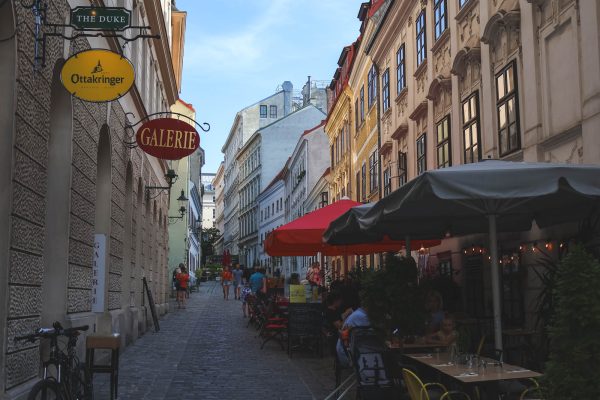
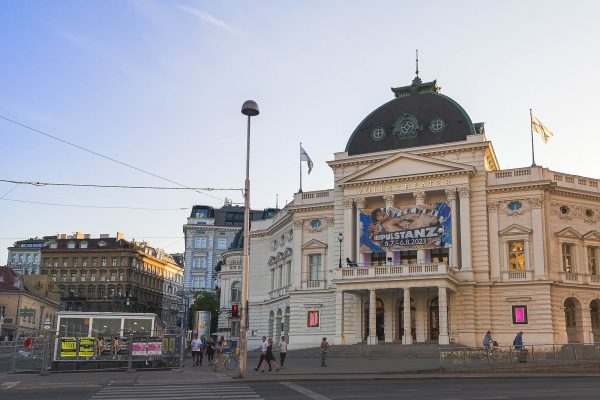
Neubau Details
- Number: 7th District of Vienna
- Coordinates: 48.2025° N, 16.3500° E
- Distance from Rathaus: 1.5 km / 0.9 miles
- First mentioned: 1850 (law on the division of the city of Vienna into districts, source)
- Population: 31,320 (as of 2020)
- Area size: 1.61 km² / 0.62 sq mi
- Elevation: 198 m / 650 ft
- District Museum: Stiftgasse 8, 1070 Wien, Austria
- Public transport connections: U3, U2, U6 / 46, 49, 5 trams / 13A, 14A, 48A, N46, N49 buses
Neubau Location
Neubau is surrounded by the Inner Stadt (The Old Town) to the east, Mariahilf (6th) to the south, Rudolfsheim-Fünfhaus (15th) to the west, and Josefstadt (8th) to the north.
Historical Overview of Neubau
The history of Neubau is rich and fascinating, with roots tracing back to medieval times. The district’s name, Neubau, which means “new construction,” was first mentioned in a document in 1406. It originally referred to a “new building” erected outside the city walls of Vienna. However, the area only officially became a district of Vienna in 1850.
The 16th century marked a significant period in Neubau’s development when the city’s fortifications were expanded to include Neubau. Remnants of these fortifications can still be seen today, notably the remnants of the Schottentor at Lerchenfelder Straße.
In the 18th and 19th centuries, Neubau became a popular residential area for the Viennese bourgeoisie. It was during this time that many of the district’s beautiful Biedermeier-style buildings were constructed. An example of this is the Theater in der Josefstadt in the neighboring district, one of the oldest still-operating theaters in the German-speaking world, which was opened in 1788.
Neubau’s character as a hub for the arts and culture was established in the late 19th century when many theaters and museums were built in the district. This development continued into the 20th century, culminating in the opening of the Museum Quarter in 2001.
Today, Neubau continues to flourish as a district that is as much rooted in its history as it is forward-looking. This rich tapestry of history is a significant part of what makes Neubau such an intriguing district to visit.
“Neubau” Name Origins
The district’s name, Neubau, which means “new construction,” was first mentioned in a document in 1406. It originally referred to a “new building” erected outside the city walls of Vienna. However, the area only officially became a district of Vienna in 1850.
Notable Landmarks and Historical Sites in Neubau
In Neubau, you can’t help yourself but stumble upon an interesting corner wherever you go. For me, personally, simply exploring Neubau was fun enough when I first decided to give the district a shot. Here are a few of the district’s highlights:
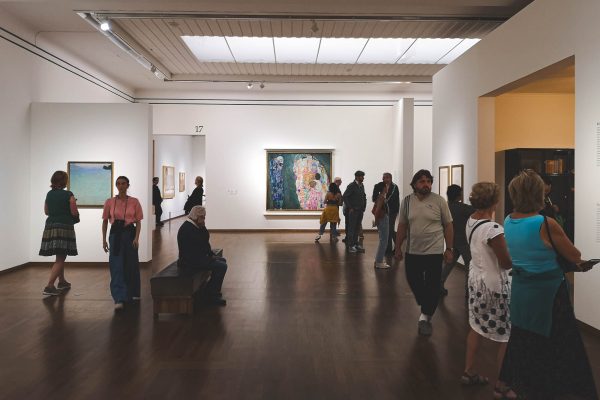
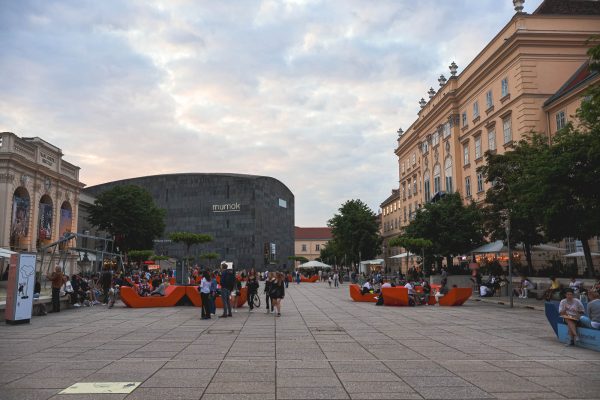
MuseumsQuartier (MQ)
This art complex is one of the ten largest cultural areas in the world. It houses renowned institutions such as the Leopold Museum, known for its extensive collection of modern Austrian art, and the Museum of Modern Art Ludwig Foundation Vienna (mumok). The area is also very popular among artsy people and the local youth – in MQ one can always find some things to do. If you want to learn more about this center of art it is possible to hire a local to guide you through MuseumsQuartier.
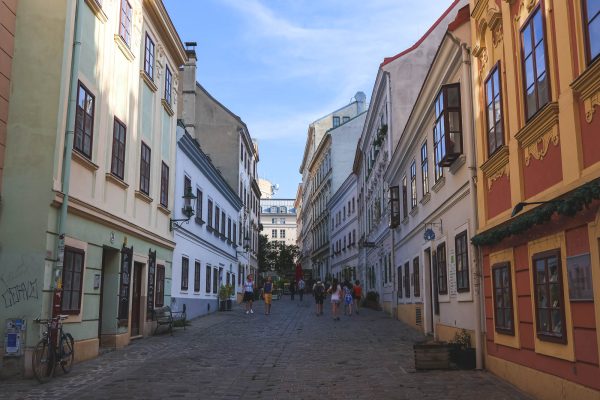
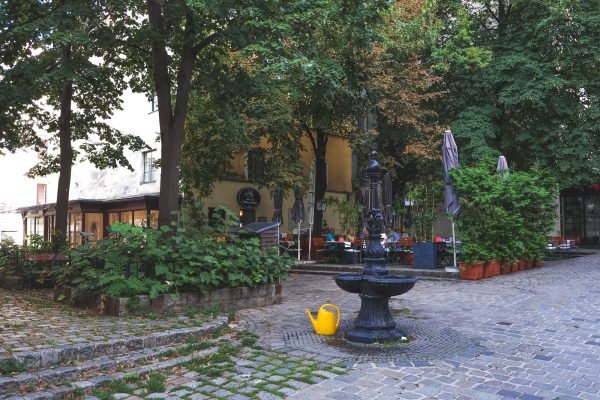
Spittelberg
A charming neighborhood characterized by well-preserved Biedermeier houses and narrow, winding alleyways. Every December, the Spittelberg Christmas Market transforms the area into a festive wonderland. The neighborhood is one of those charming places in the city, where Viennese love to enjoy their time away from tourists crowds.
Volkstheater
Opened in 1889, the Volkstheater is one of the largest theaters in the German-speaking world. It is renowned for its repertoire of Austrian plays, classical works, and contemporary dramas.
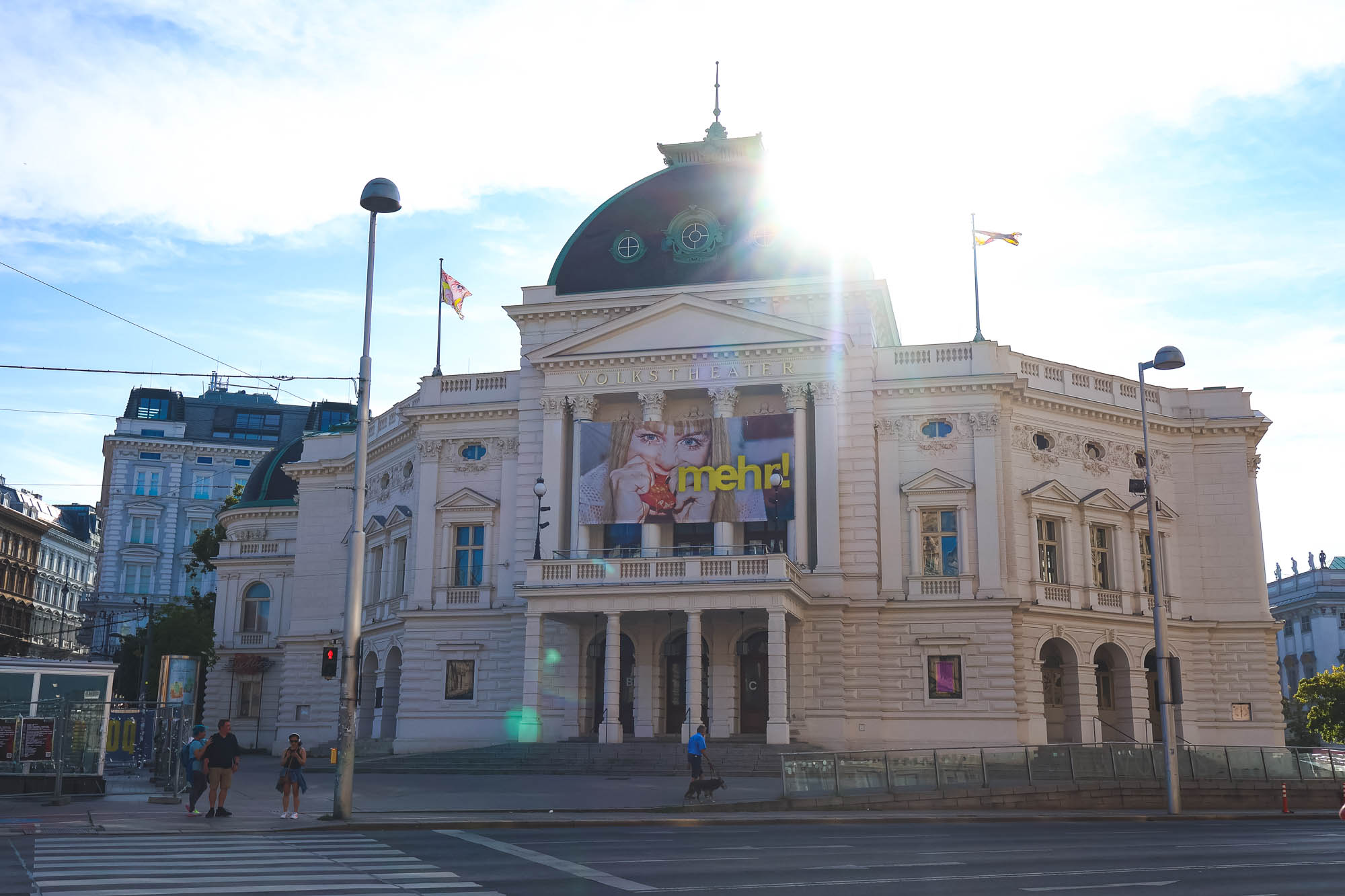
Volkstheater is on of the main theaters in Vienna. Photo by Alis Monte [CC BY-SA 4.0], via Connecting the Dots
Things to Do in Neubau
Neubau offers a diverse range of activities that showcase both its historic charm and its modern, artistic vibe. Whether you’re an art enthusiast, history lover, or foodie, there’s something to suit your interests in this vibrant district. In Neubau, you’ll never be short of things to do. Here are some suggestions:
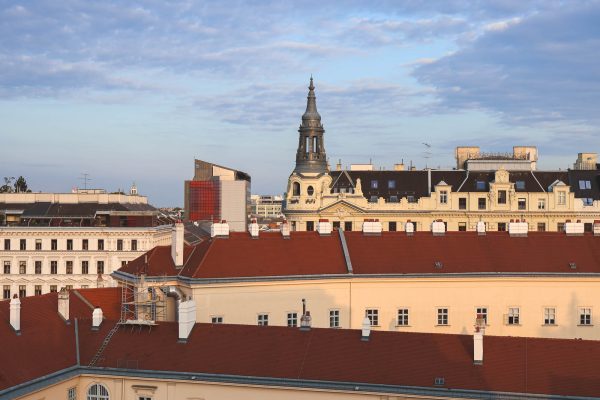
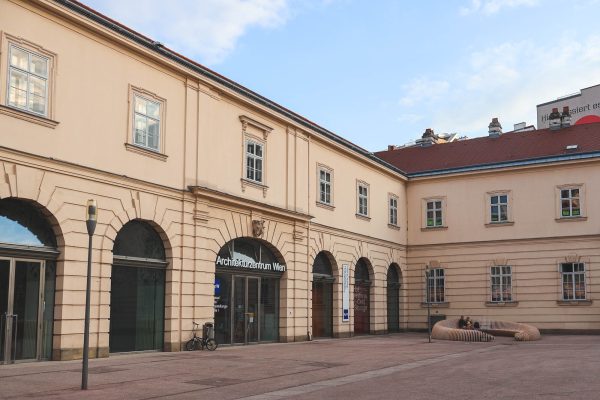
Explore the MuseumsQuartier
Delve into the world of contemporary art and culture at the Leopold Museum and mumok, or explore one of the many other cultural institutions in this vast complex. Don’t forget to take a break at one of the stylish MQ cafes.
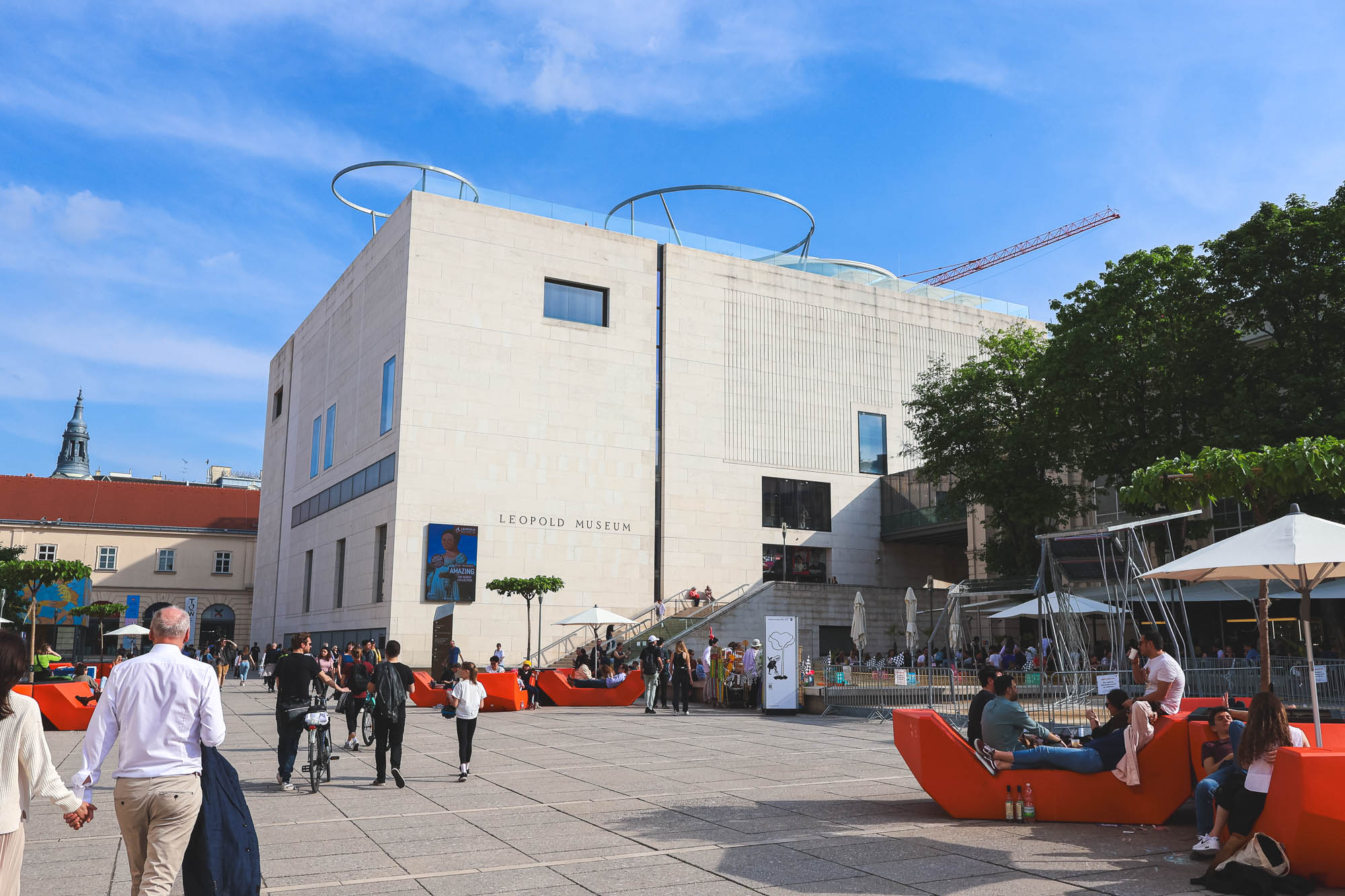
Leopold Musuem houses a vast collection of Austrian artists work with a focus on modernism. Photo by Alis Monte [CC BY-SA 4.0], via Connecting the Dots
Visit Leopold Museum
Dive into the heart of Austrian art at the Leopold Museum, home to an extensive collection of modern Austrian art, including major works by Egon Schiele and Gustav Klimt. The museum’s striking architecture and the breadth of its collection offer a deep dive into Vienna’s art history. Leopold Museum combined with the Museum of Art History are two of the most important art museums in Vienna, and even further.
Pro tip: If you are visiting Vienna during the high peak season, I would recommend getting skip-the-line ticket to Leopold Museum online in advance.
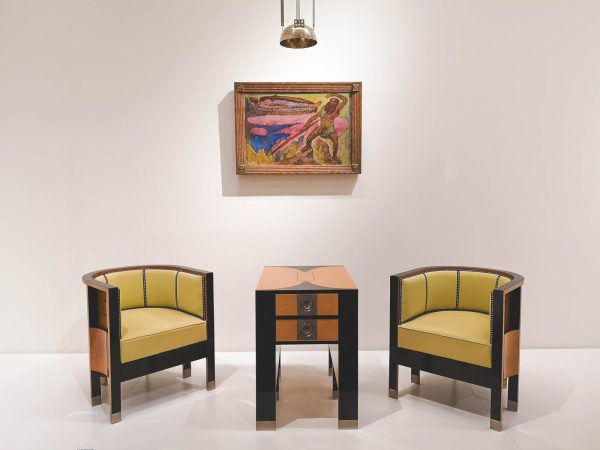
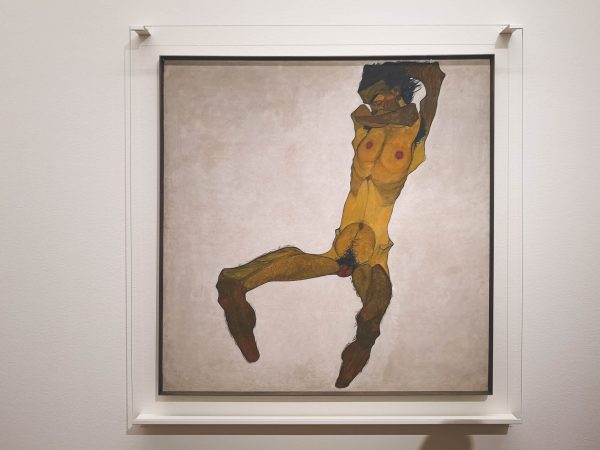

Mumok Museum houses a vast collection of contemporary art. Photo by Alis Monte [CC BY-SA 4.0], via Connecting the Dots
Explore mumok (Museum of Modern Art Ludwig Foundation
Mumok stands as a bastion of contemporary art, housed in a distinctive dark basalt cube. It showcases a comprehensive collection ranging from classic modernism to current artistic trends, making it a must-visit for art enthusiasts keen on exploring the avant-garde and postmodern movements. I, personally, don’t get most of the current artistic trends. For people like me, I would recommend going to mumok museum with a professional guide.
Discover Spittelberg
Spittelberg, with its narrow cobblestone streets and Biedermeier houses, offers a charming glimpse into Vienna’s past. This area comes alive with its boutique shops, artisan workshops, and cozy cafés, making it perfect for a leisurely exploration or finding that unique gift.
Shop on Neubaugasse
Neubaugasse is renowned for its eclectic mix of shops offering everything from vintage clothing to contemporary designer wear. This street is a haven for shoppers looking for unique finds and independent labels, reflecting Neubau’s reputation as a trendy and forward-thinking district.
Shop Even More on Mariahilfstrasse
As Vienna’s longest and most vibrant shopping street, Mariahilferstraße offers an endless array of shops, department stores, and eateries. Stretching through Neubau, it’s the perfect place for those looking to indulge in retail therapy or simply enjoy the bustling atmosphere.
Places to Eat and Drink in Neubau
Neubau’s food and drink scene is as diverse and vibrant as the district itself. Here are some notable establishments:
- Glacis Beisl: Hidden within the MuseumsQuartier, this restaurant offers traditional Austrian cuisine in a modern and cozy setting. Its beautiful garden is perfect for outdoor dining in the warmer months.
- Die Burgermacher: This popular burger joint uses locally sourced ingredients to make their delicious burgers. The menu also features a good selection of craft beers to accompany your meal.
- Erich: A trendy café and bar that serves a mix of international and local dishes. They are known for their brunch, which is considered one of the best in Vienna.
- Siebensternbräu: A traditional Viennese brewery that serves a variety of beers brewed on-site, along with hearty Austrian dishes. Their beer garden is particularly popular in summer.
- Der Dachboden: One of the most popular places to enjoy a drink on your city getaway is, of course, rooftops. Der Dachboden is one such rooftop in Neubau facing the Inner Stadt (eng “Old Town”), making it a perfect place for any tourist to check the skills of local bartenders while embracing the beautiful panorama of Vienna. There is also a seasonal cafe on the Leopold Museum rooftop as an alternative.
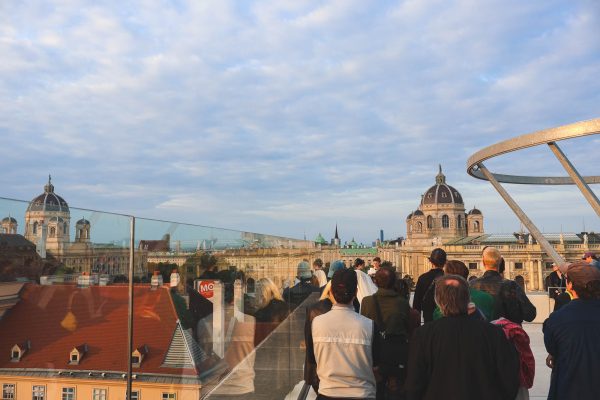
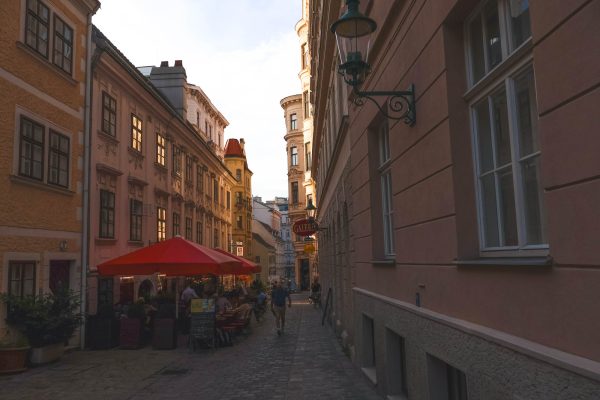
Accommodation in Neubau
Neubau, a vibrant district known for its artistic flair and historical charm, offers a variety of accommodation options suitable for every type of traveler. Whether you’re seeking the unique ambiance of a design hotel, the cozy atmosphere of a family-run establishment, or the affordability of hostel living, Neubau has something to offer. Explore our top recommendations below:
Experience unparalleled city views and artistic room decor at the 25hours Hotel Vienna at MuseumsQuartier. Nestled in the heart of Neubau, this hotel is famed for its rooftop bar and its prime location, making it an ideal choice for those looking to immerse themselves in the district’s vibrant culture.
For a taste of authentic Viennese hospitality, consider staying at Hotel Kugel. This family-operated hotel, set in the historic Spittelberg quarter, welcomes guests with its charming Biedermeier-style architecture and comfortable accommodations, promising a memorable experience of Vienna’s traditions.
Art enthusiasts will find their haven at Hotel Altstadt Vienna, located on a peaceful street within Neubau. This boutique hotel is distinguished by its individually designed rooms and an impressive collection of art, offering a unique and inspiring stay.
Travelers on a budget will appreciate the welcoming atmosphere and affordable rates at Hostel Ruthensteiner. Conveniently situated near Westbahnhof station, the hostel provides easy access to explore Vienna while offering both dormitory and private room options.
For those preferring a more personal touch to their stay, renting an apartment in Neubau offers a unique opportunity to live like a local. With numerous self-catering apartments available, guests can enjoy the flexibility and comfort of a home in the heart of this dynamic district.
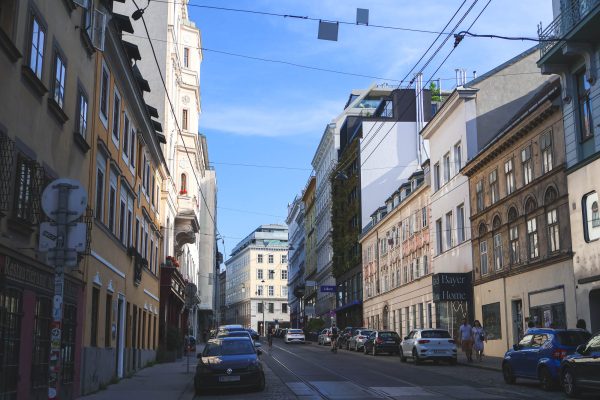
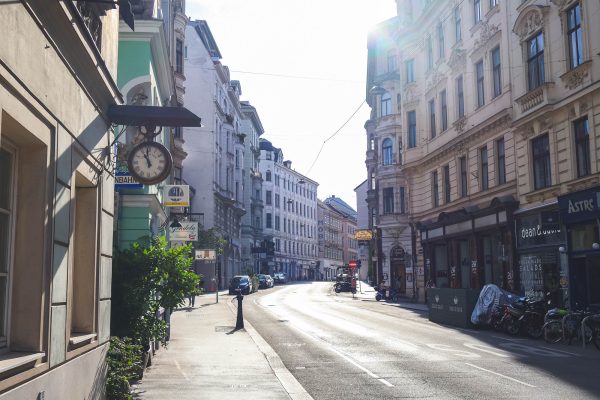
Getting to & around Neubau
Neubau, Vienna’s vibrant seventh district, is renowned for its accessibility and excellent public transportation options. Whether you’re interested in exploring Neubau’s eclectic mix of shops, galleries, and cafes or venturing further afield, you’ll find navigating the area straightforward and convenient. However, don’t miss the chance to wander through its lively streets on foot and discover what makes this district unique.
By Tram
Tram lines 49 and 5 traverse Neubau, facilitating easy access to the district’s many attractions and providing smooth connections to the inner city. These tram routes are perfect for sightseeing and soaking in the local atmosphere.
By U-Bahn (Subway)
The U3 subway line serves Neubau, with key stations like Neubaugasse and Westbahnhof. U2 and U6 are also available on the edges of the district, connecting Neubau to various parts of the city efficiently.
By Bus
Neubau benefits from an extensive bus network, with lines such as the 13A, 14A, and 48A providing links to other districts and key points in Vienna. This network ensures that moving around the city is seamless and accessible.
By Bicycle
Exploring Neubau by bicycle is a joy, thanks to Citybike Wien, Vienna’s bike-sharing service, and the district’s extensive bike lane network. Whether you’re commuting or leisurely cycling, Neubau’s bike-friendly routes make it a pleasure to navigate on two wheels.
By Car
In such a central district like Neubau, there is no point in getting a car. Vienna has amazing public transport.
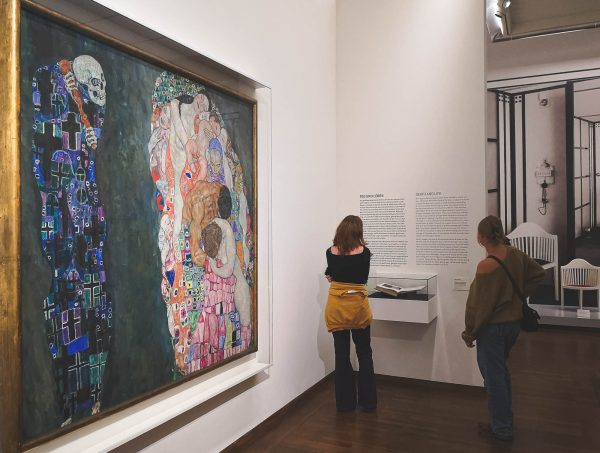
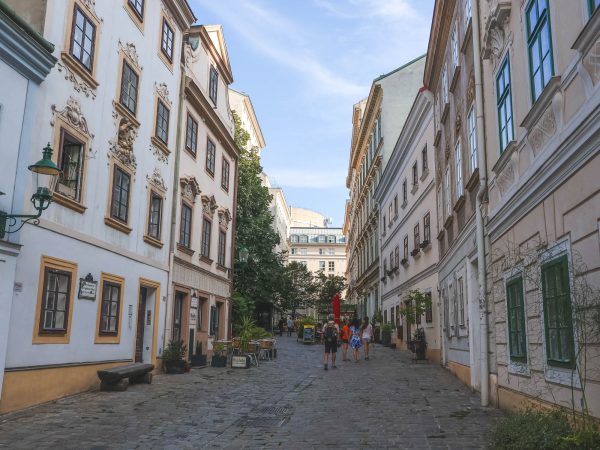
Personal Favourites
Neubau certainly stands out for its energetic atmosphere and unique charm. The district has a lot to offer, but here are some highlights that shouldn’t be missed.
One of the district’s greatest assets is the MuseumsQuartier. This cultural hub is a paradise for art and culture enthusiasts. From the Leopold Museum with its impressive collection of Austrian art to the Mumok, the largest museum for modern and contemporary art in Central Europe, the MQ is a place where you can spend an entire day without getting bored.
Another gem of Neubau is Spittelberg, a historic neighborhood known for its quaint Biedermeier houses and cobblestone streets. It offers a completely different vibe compared to the rest of the district with its boutiques, art studios, and charming cafes. It’s also worth visiting during Christmas time when the famous Spittelberg Christmas Market comes to life.
However, the district’s vibrant and youthful vibe can sometimes be overwhelming, especially on weekends when its bars and restaurants are filled with a lively crowd. If you prefer a quiet, laid-back atmosphere, then this might not be the best fit for you.
Overall, Neubau is a vibrant district that perfectly encapsulates Vienna’s past and present like any other district, just more. Its blend of historic charm and modern culture make it a must-visit for anyone coming to Vienna with an attitude “when-in-Rome-act-like-Roman”. So why not come and experience the magic of Neubau for yourself?
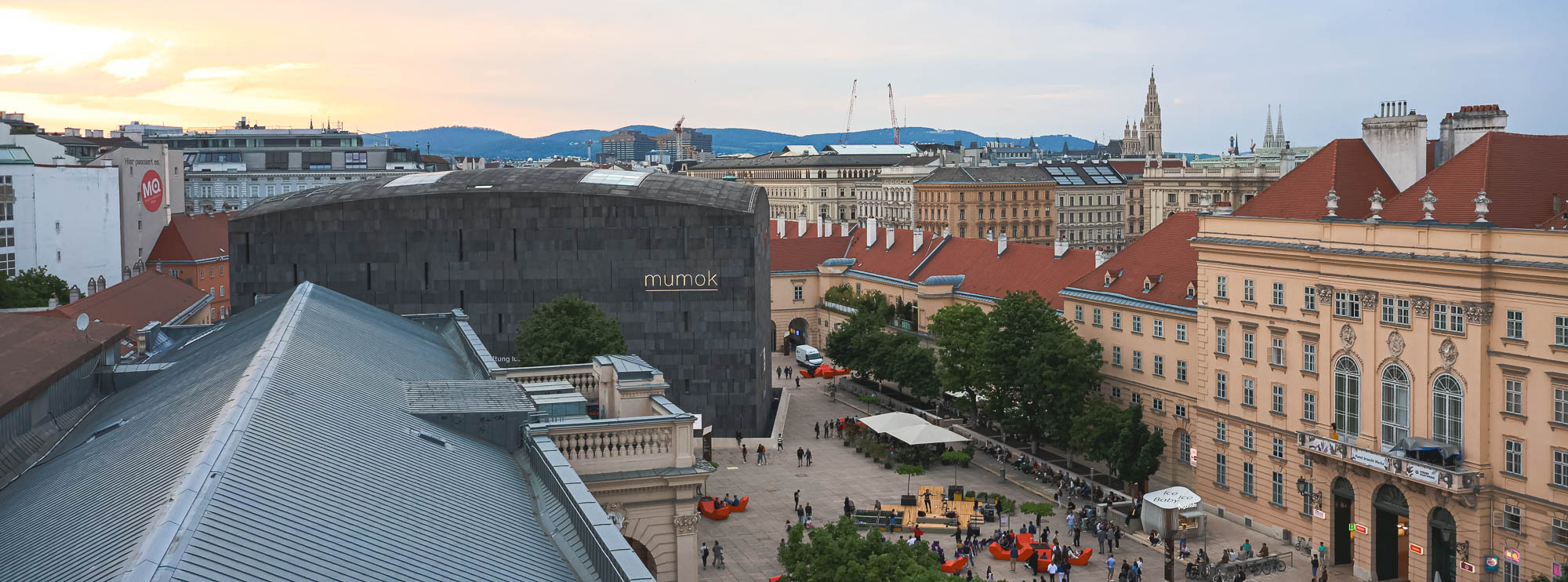
MuseumQuartier (MQ) from the rooftop of Leopold Museum. Photo by Alis Monte [CC BY-SA 4.0], via Connecting the Dots